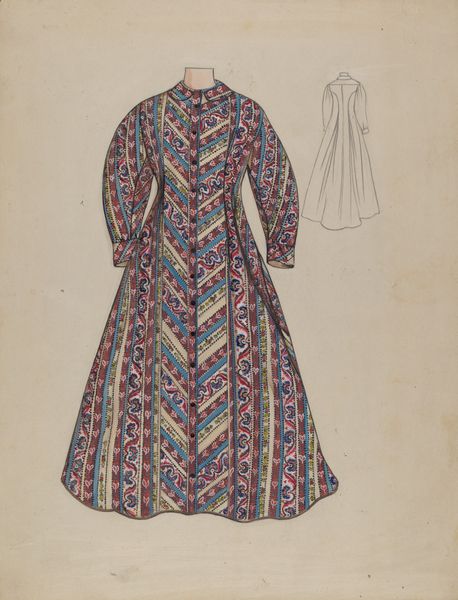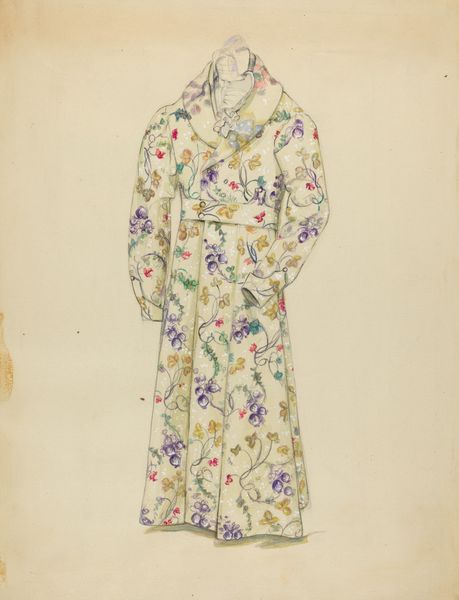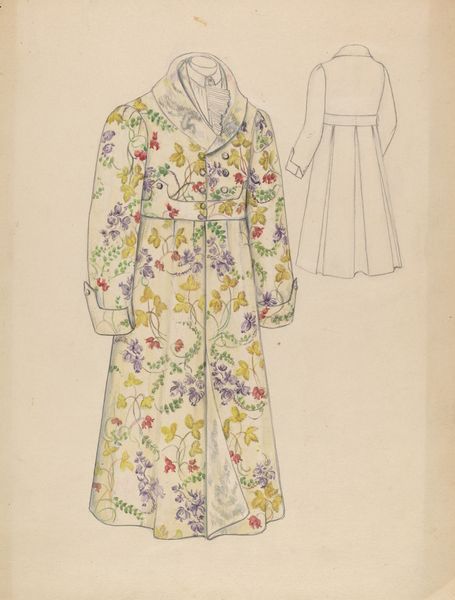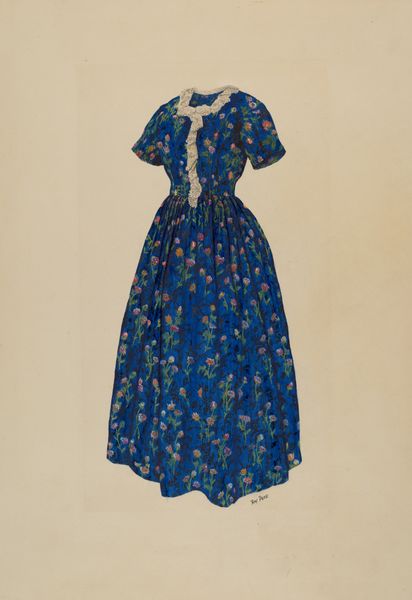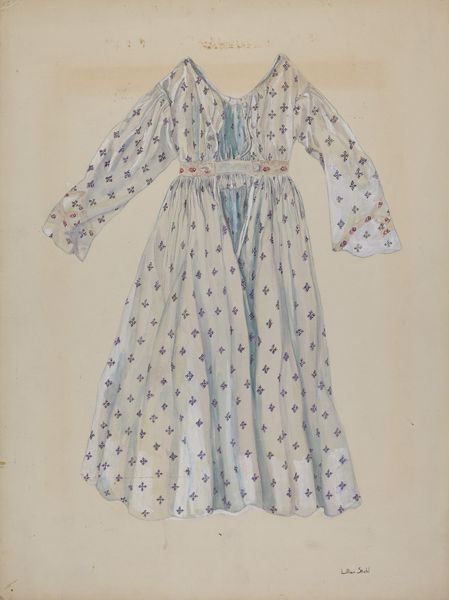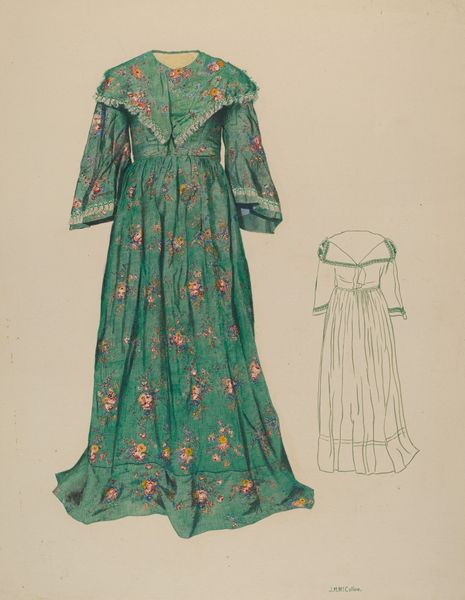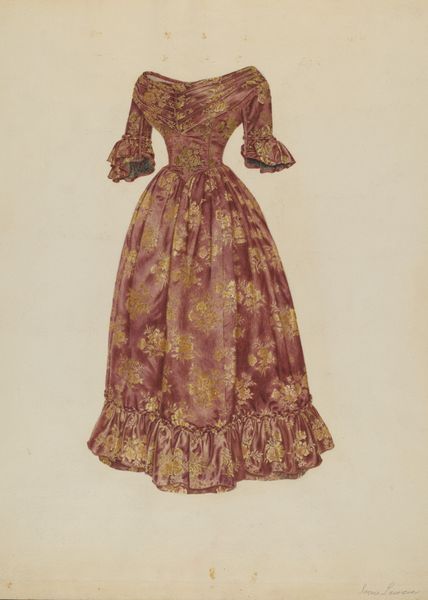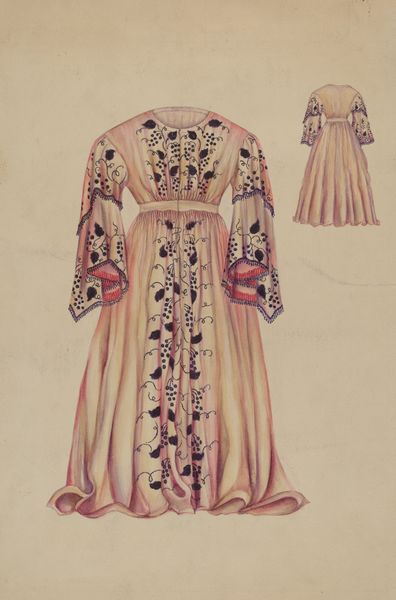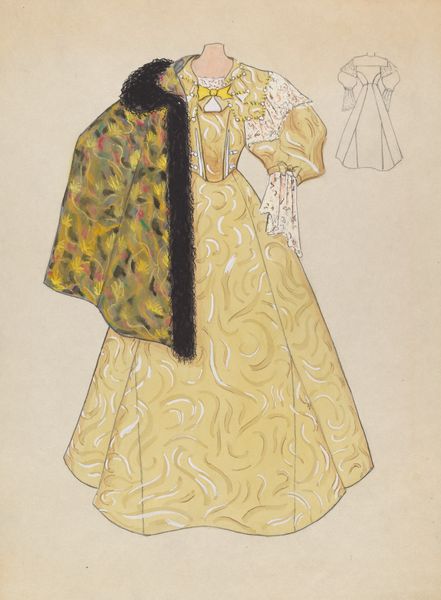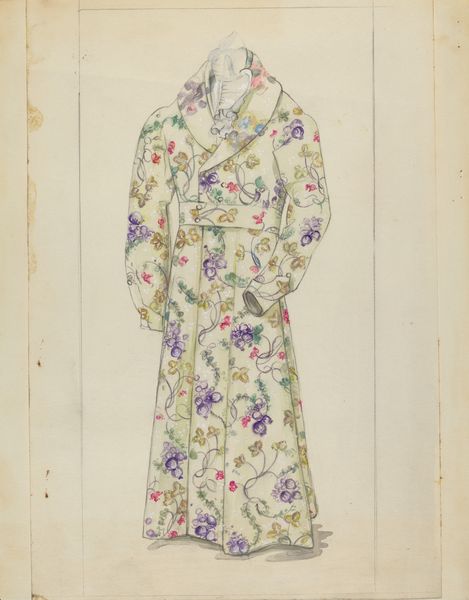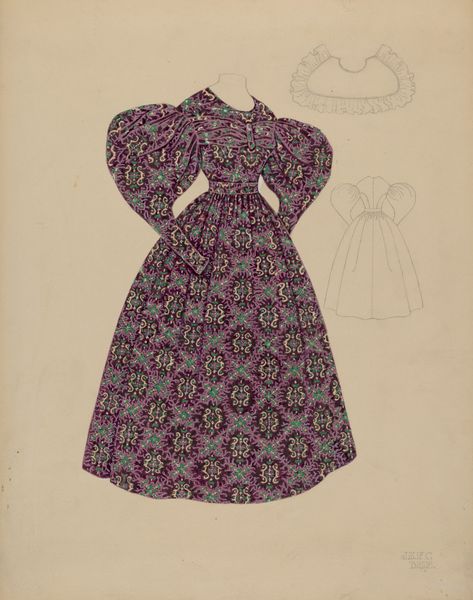
painting, watercolor
#
fashion design
#
editorial print
#
painting
#
fashion mockup
#
collage layering style
#
fashion and textile design
#
watercolor
#
clothing theme
#
clothing photo
#
textile design
#
ethnic design
#
clothing design
Dimensions: overall: 50.4 x 38 cm (19 13/16 x 14 15/16 in.)
Copyright: National Gallery of Art: CC0 1.0
Curator: Here we have "Pa. German Dress," a mixed-media work including drawing and textile, created between 1935 and 1942 by Betty Jacob. What are your initial impressions? Editor: It's visually arresting! The layered patterns and collage-like style create such a dynamic, almost dizzying effect. It feels quite opulent, but with a strangely folksy sensibility. Curator: Indeed. The pattern and decoration art movement heavily influenced this piece, a style where surface ornamentation becomes the primary focus. Observe how the artist repeats motifs but varies scale and color, creating a calculated sense of visual rhythm and variation. Editor: This speaks to the history of Pennsylvania German textile traditions, though. These weren't simply decorative—clothing was often a marker of identity, community, and even resistance to cultural assimilation. I wonder about the role of women in preserving these traditions. Did the artistic choices represent personal stories, beliefs, or social commentary, given the time? Curator: Intriguing questions. From a purely formal standpoint, the use of line is also quite striking. Note how the artist employs different weights and textures to define forms and create depth. The color palette, predominantly purples, greens, and reds, also contributes to the work’s complexity. Editor: But color in ethnic design often carries specific meaning, right? These could have been significant within the community, offering insight into their cultural framework or social structures during that time. The fashion mockup hints at an interesting fusion of practicality and artistic flair, showing that even everyday objects could hold immense cultural value. Curator: I agree. Looking at the piece purely for its aesthetic elements helps understand its visual strategies, regardless of intent. The layering adds so much dimension and complexity. Editor: Perhaps, but considering the piece within its historical and social fabric lets us unravel the narrative that is encoded in those artistic strategies. It lets us look beyond beauty to consider agency, representation, and even survival. Curator: Your viewpoint helps me appreciate that context even more as part of my interpretation. Editor: Likewise, your analysis really sharpens my focus on the aesthetic intent, as well as the skill involved.
Comments
No comments
Be the first to comment and join the conversation on the ultimate creative platform.
